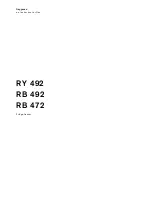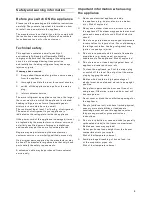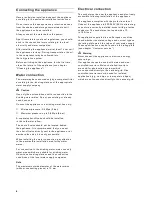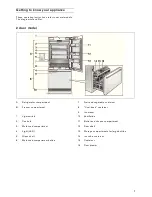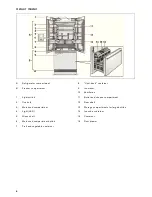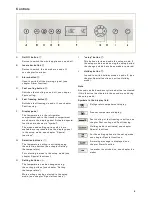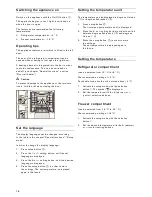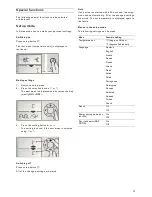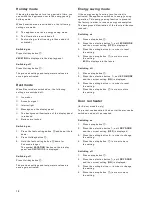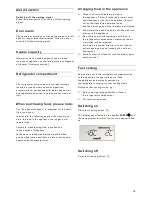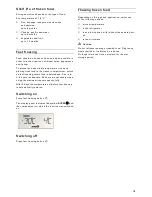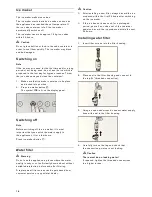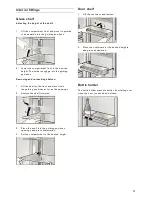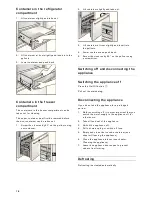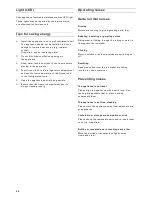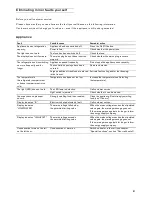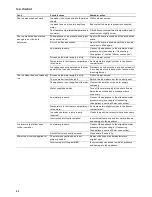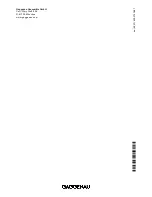
14
“Cool-fresh” container
The “cool-fresh” container has a temperature
of almost 0 °C. Ideal for storing fish, meat, sausage,
cheese and milk.
The temperature in the “cool-fresh” container can be
reduced slightly with the slide control.
We recommend the following controller position:
▯
COLD: Meat, sausage and poultr y
▯
COLDER: Fish
Freezer compartment
Use the freezer compar tment :
▯
To store deep-frozen food.
▯
To freeze food.
▯
To make ice cubes.
Note
Ensure that the freezer compar tment door is always
closed properly. If the door is open, the frozen food
will thaw. The freezer compartment will become
covered in thick ice.
Also: Energy will be lost due to high power
consumption.
Purchasing frozen food
▯
Packaging must not be damaged.
▯
Use by the “use by” date.
▯
Temperature in the supermarket freezer must be
-18 °C or lower.
▯
If possible, transpor t deep-frozen food in an
insulated bag and place quickly in the freezer
compartment.
Max. freezing capacity
Information about the max. freezing capacity within
24 hours can be found on the rating plate (see
diagram at chapter “Customer ser vice”).
Freezing fresh food
Freeze fresh and undamaged food only.
To retain the best possible nutritional value, flavour
and colour, vegetables should be blanched before
freezing. Aubergines, peppers, zucchini and
asparagus do not require blanching.
Literature on freezing and blanching can be found
in bookshops.
Note
Keep food which is to be frozen away from food which
is already frozen.
▯
The following foods are suitable for freezing:
Cakes and pastries, fish and seafood, meat,
game, poultry, vegetables, fruit, herbs, eggs
without shells, dairy products such as cheese,
butter and quark, ready meals and leftovers such
as soups, stews, cooked meat and fish, potato
dishes, soufflés and desser ts.
▯
The following foods are not suitable for freezing:
Types of vegetables, which are usually consumed
raw, such as lettuce or radishes, eggs in shells,
grapes, whole apples, pears and peaches, hard-
boiled eggs, yoghur t, soured milk, sour cream,
crème fraîche and mayonnaise.
Packing frozen food
To prevent food from losing its flavour or dr ying out,
place in air tight containers.
1.
Place food in packaging.
2.
Remove air.
3.
Seal the wrapping.
4.
Label packaging with contents
and date of freezing.
Suitable packaging:
Plastic film, tubular film made of polyethylene,
aluminium foil, freezer containers.
These products are available from specialist outlets.
Unsuitable packaging:
Wrapping paper, greaseproof paper, cellophane, bin
liners and used shopping bags.
Items suitable for sealing packaged food:
Rubber bands, plastic clips, string, cold-resistant
adhesive tape, etc.
Bags and tubular film made of polyethylene
can be sealed with a film heat sealer.

